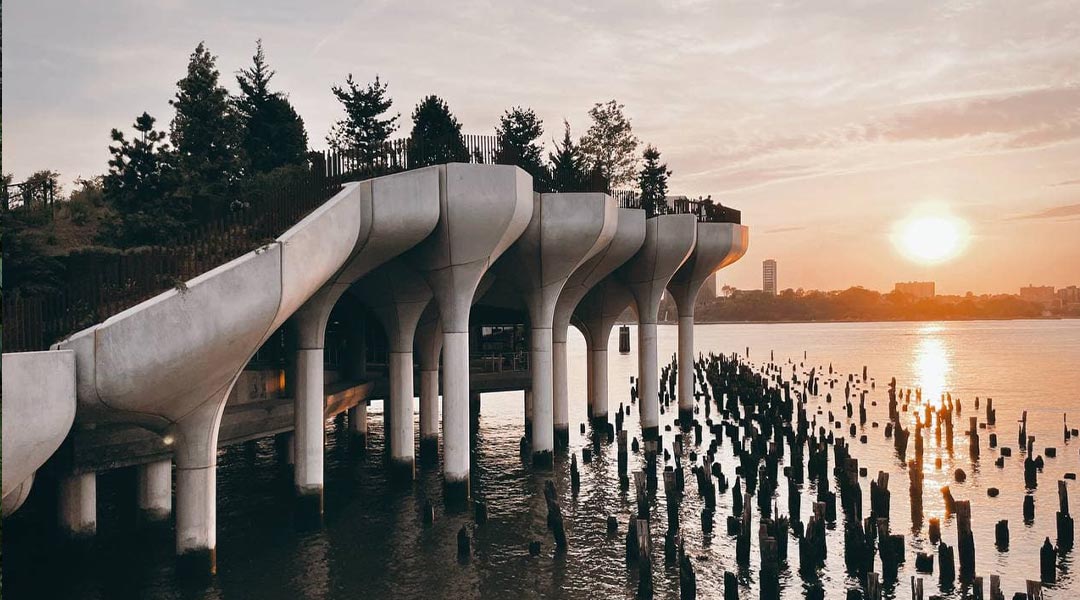
EXCLUSIVE: Architect and BluPrint Correspondent Raphael Causapin’s Eagle-Eye view of New York’s Little Island
New York City is one of the glowing destinations for every soul searcher, dreamer, and certainly, soon-to-be architect. Aside from the reputation for being the city that never sleeps, New York gleams with sky-high buildings and structures that scream for the modernity that suits this blinding city. Raphael Causapin, an architect who lives in NYC and develops stations and urban element designs for transit agencies all around North America is one of the residents who are witnessing this fabulous city’s growth towards modern designs that are still sustainable and connect people with nature. In his free time, he is interested in art, history, societies, and current events. Currently, the baroque and modern Little Island has captured not only Causapin’s eyes but the entire architecture world’s as well. Through Causapin’s point of view, BluPrint presents an exclusive look of the Little Island.
READ MORE: Spotlight: The Zaragoza Bridge Pavilion
Towards the end of 14th Street near 10th Avenue, as I approach the crosswalk, an undulating silhouette came to view: trees and shrubbery atop a hill made of concrete champagne flutes set over the Hudson River. It was a glorious late spring afternoon. Many people had gathered at the entrance, buzzing around, hanging out, looking at the spectacle. Little Island is New York City’s newest and hottest public space: a park, constructed partially over the river, defying gravity. From the outside, it entices you and lures you in, like a mysterious creature from the water that wants you to partake and discover something magical.
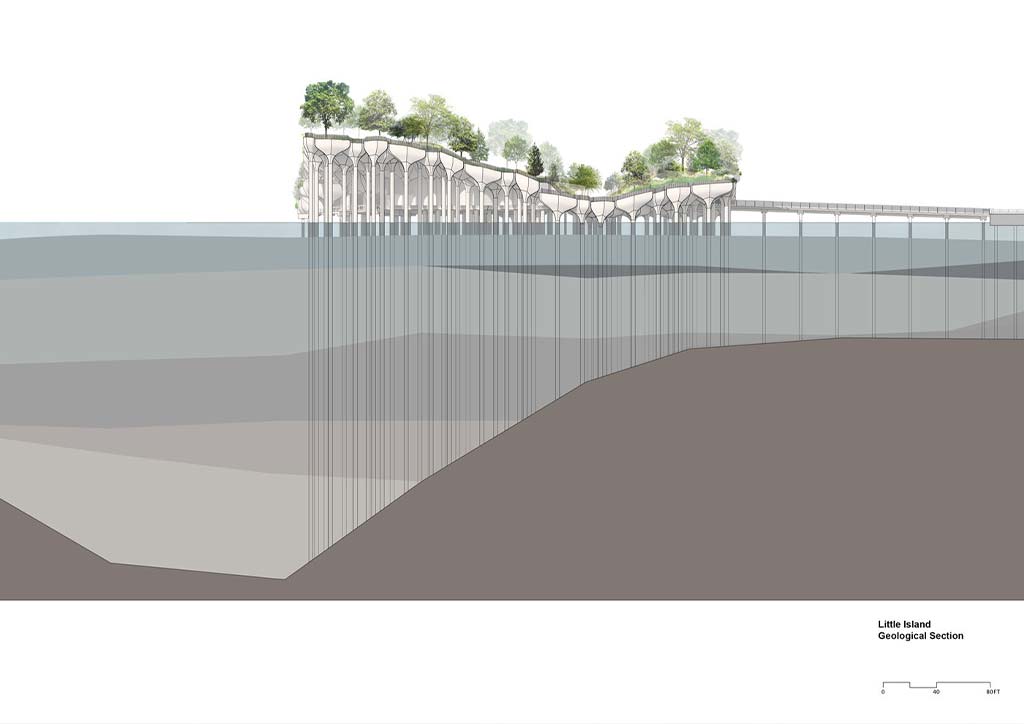
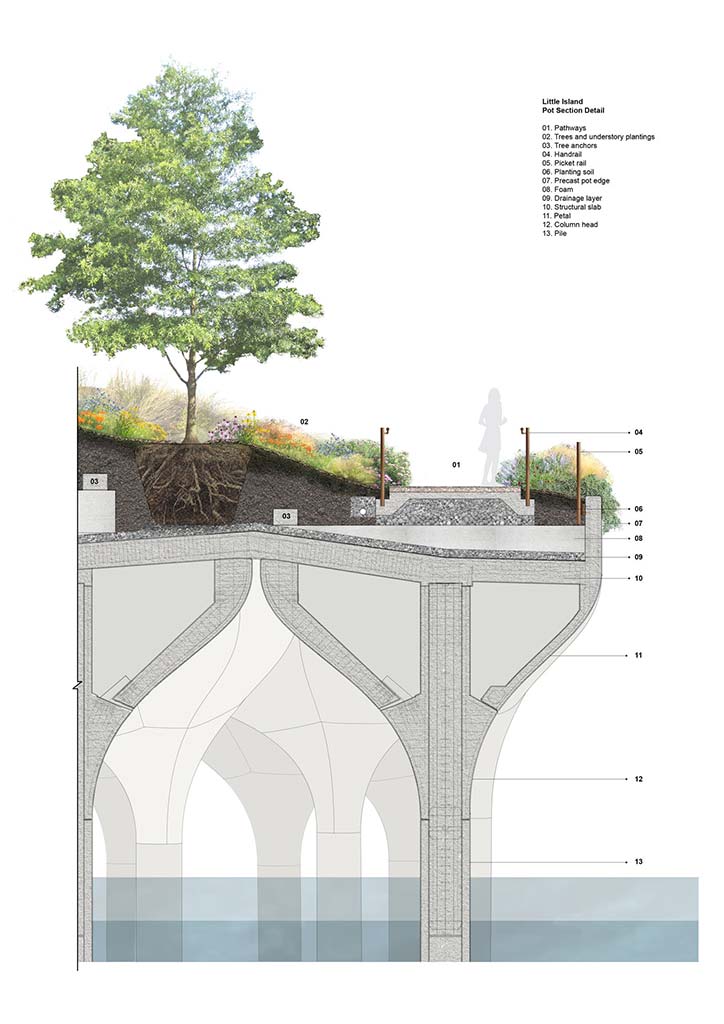
The park was conceived almost a decade ago after Hurricane Sandy ravaged the remains of Pier 54 in 2012.

I admit to being skeptical at first when I saw renderings a few years ago of the space, with its highly unusual forms, floating in the river.
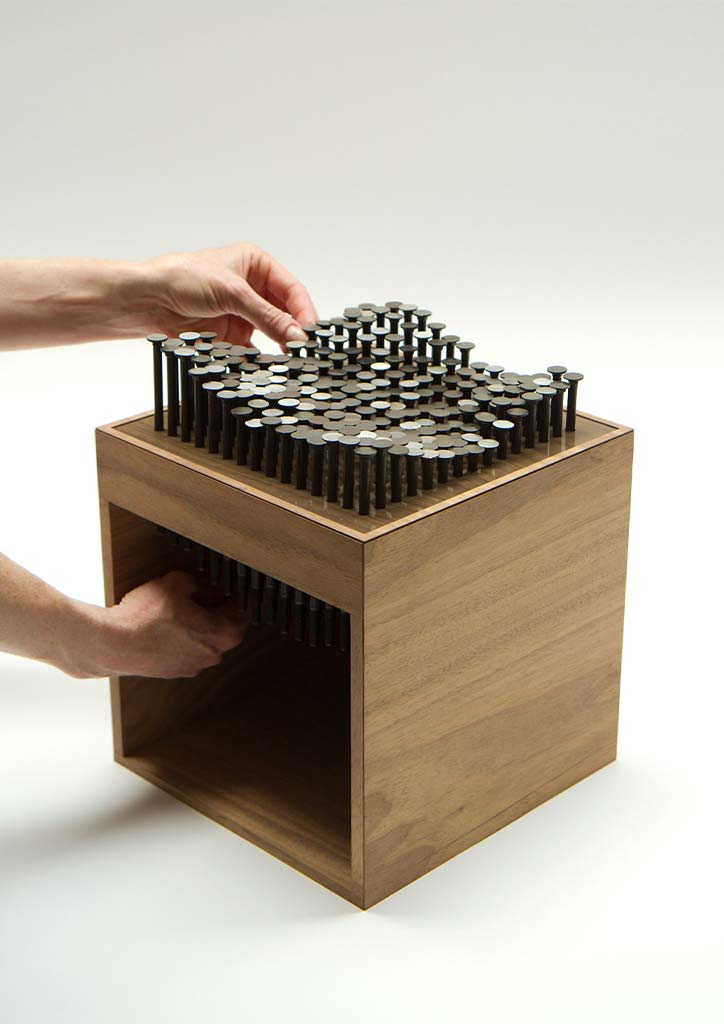
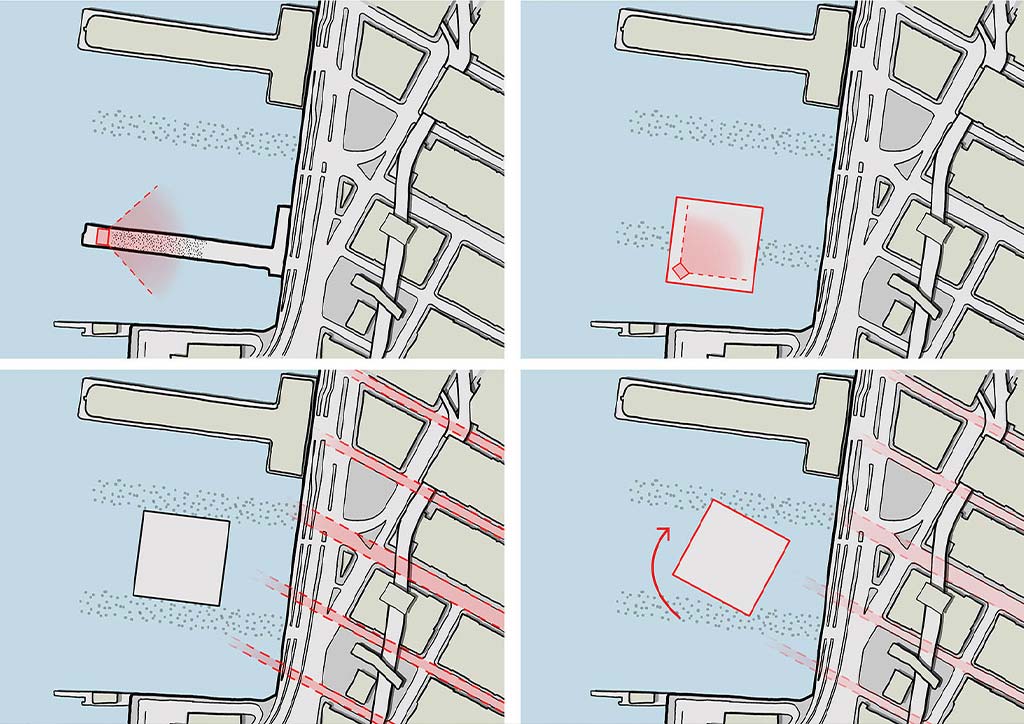
As an Architect, I’ve seen many images of grand and unrealized proposals because there is never a shortage of big ideas in a city popularly known as ‘the Big Apple’. But, against my expectations, and despite long bureaucratic challenges and strong stakeholder opposition, this $260 million feat came to fruition. With the support of the Hudson River Park Trust and the Diller-von Furstenberg Family Foundation, it opened its doors last week, inviting New Yorkers, and everyone else, for a much anticipated post-pandemic stroll.
READ MORE: Design in the time of Covid
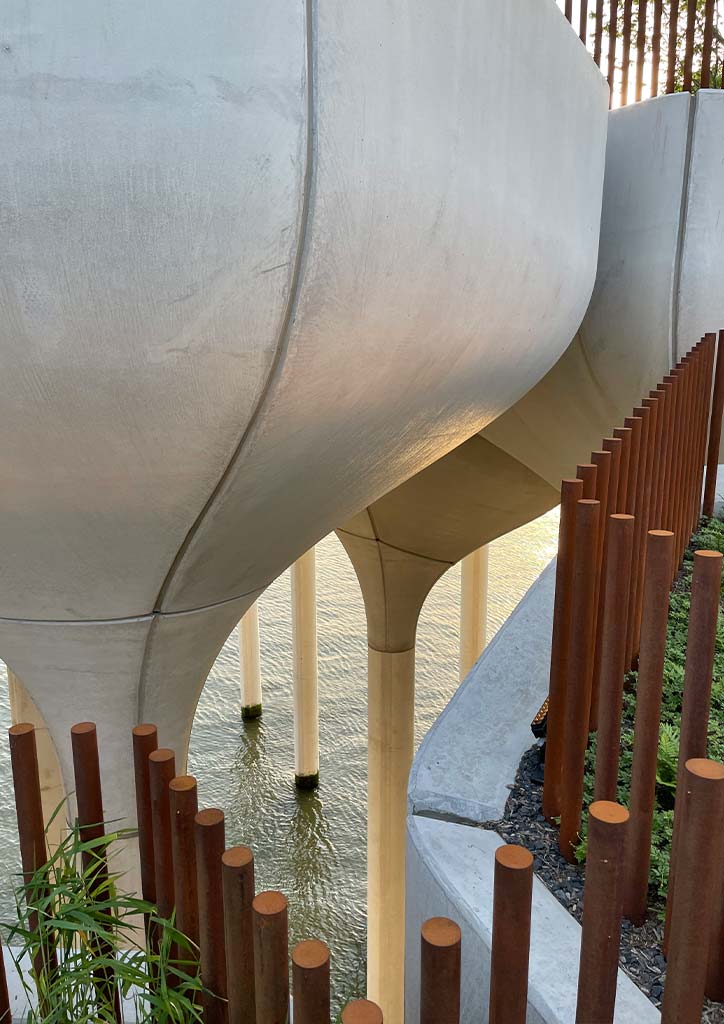

From the sidewalk, I entered the park via the southern bridge, passing underneath a portal of concrete piles, whose forms have varyingly been described as tulip petals or stiletto heels, revealing a dramatic topography of sloping lawns, meandering paths, and open spaces. It was a very staged entrance, ending with a satisfying reveal that reminded me of Italian Baroque architecture’s illusionary tricks. Designed by Heatherwick Studios and Arup Engineering, the park utilizes 132-unique cast concrete columns that were inspired by the remains of the old pier, but whose ambitious forms speak the language of the future.
READ MORE: More from Anthology Festival 2021: Shelter Dialogues and What Makes a City

Each column serves as a concrete “pot” supported by a pile driven down to rock as much as 60 meters below the water. To create each unique pot, 39 different formworks were used and measures about six meters in diameter while supporting up to 350 tons. Immediately to my right was a path that led up to one of the many hills in the park. I took it. The plants and flowers all look crisp and inviting, a reflection of the season just as much as of masterful garden design. Matthew Nielsen Landscape Architects is behind this 9,700 square meter horticultural delight.
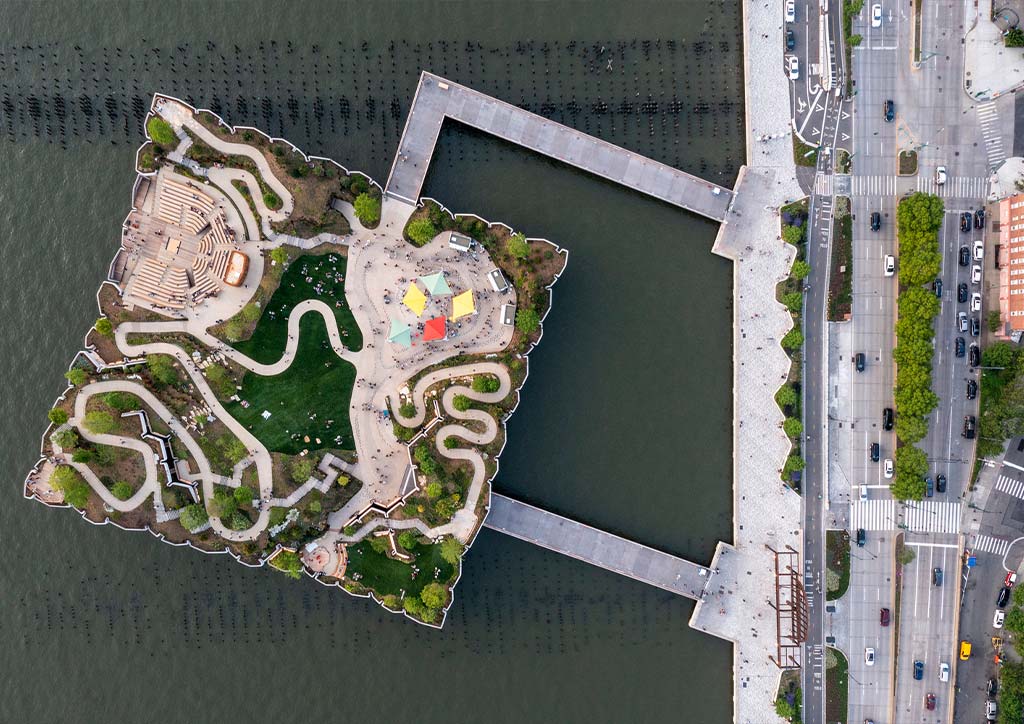
It showcases 35 species of trees, 65 species of shrubs, and 270 species of grasses, vines, and perennials. More than 66,000 bulbs were initially planted. They have been carefully selected to be attractive to birds and pollinators in all seasons of the year. Because of varied elevations causing extreme sun and wind exposures in certain areas of the park, miniature microclimates have emerged, presenting dazzling biodiversity unusual for New York City Parks. There is a little more than half a kilometer of garden trails to explore inside.
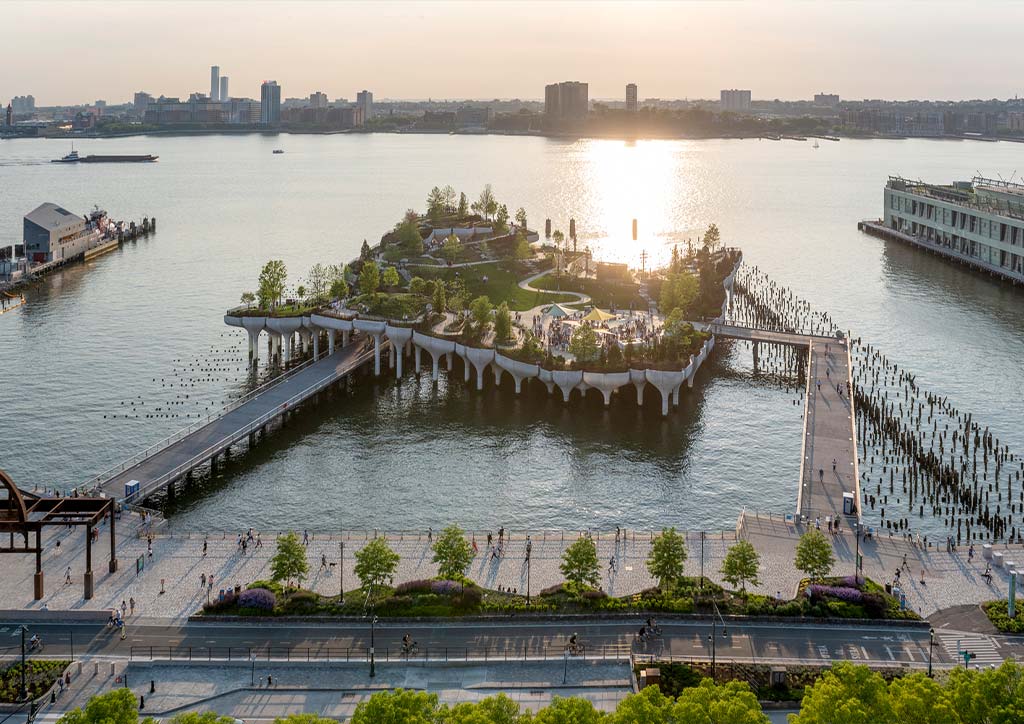
At the end of the path was an overlook with scenic views of downtown Manhattan. The high vista offered glimpses of more areas to explore and trails to wander to.
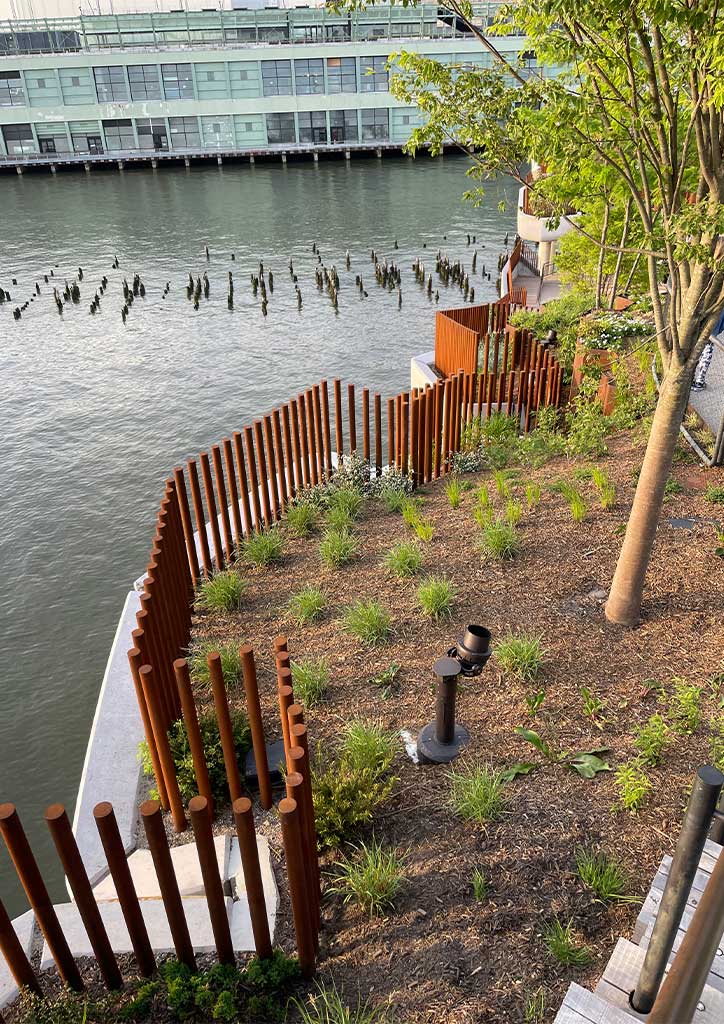
Visitors were leisurely moving about, curiously waiting to discover what’s beyond the next turn. Headed down the path, I reached the main lawn. The gradual slope offered visitors many areas for sitting, resting, and lying under the sun. After more than a year of Covid seclusion, New Yorkers had come out and gathered to escape their cocoons. It was a feast for the senses! Beautiful vistas, fresh smell of foliage, sharp feel of grass, and pleasant sound of floor percussion.
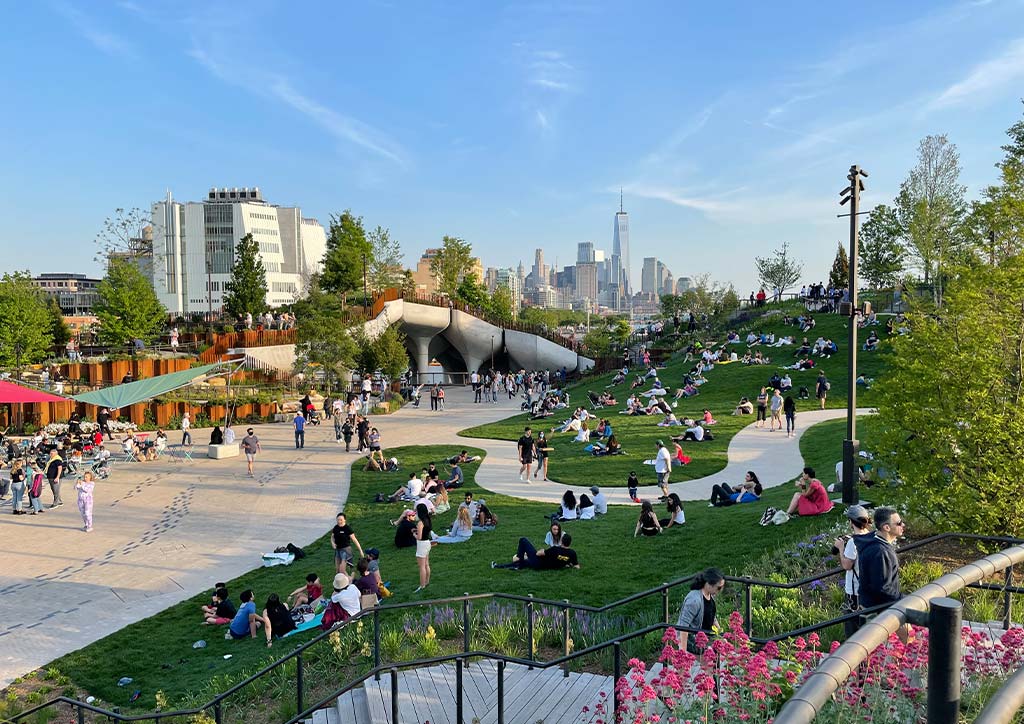
Climbing the northwest trail to yet another hill, I caught a glimpse of some of the other attractions the park offers: An amphitheater overlooking the water is able to seat 687 people. It will feature concerts and performances all season long. The main plaza, covered by tensile shade structures, includes dining tables, chairs, and food kiosks. There seemed to be no shortage of options to lay down, lean on, and do what New Yorkers love to do: to engage in good old-fashioned ‘people watching’.

The sun was just about to set as I moved towards the north bridge exit, the fading light casting a soft glow on the concrete piers. Some people were leaning on the railing taking their last photographs.
I felt giddy by what I had just experienced: excited for more, yet also satisfied by what I had seen. Departing the “little island”, I thought about what an understatement that name really is. And about how much I look forward to seeing that little island again — with its face ever-changing through the seasons.
Notes on the Writer:
Raphael Causapin
Born in Manila, Causapin is now an architect living and working in New York City. Currently, he develops station and urban element designs for transit agencies all around North America. In his free time, he is interested in art, history, societies, and current events.
READ MORE: 5 Hotels/Resorts to visit Post-Pandemic


